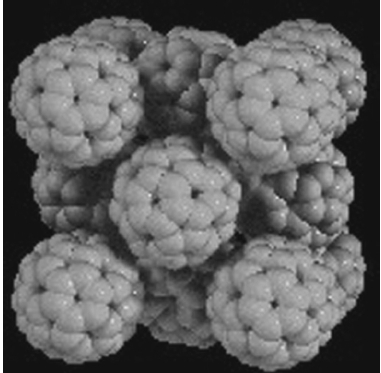Back to Technology > Solar Cells
Abstract
Photovoltaic (PV) cells that provide electricity to operate pocket calculators or emergency radios are cheap, off-the-shelf items. But for powering large population centers use of these environmentally friendly photocells built around inorganic semiconductors, such as silicon, is not in the offing. Because these PV cells produce only minor amounts of electricity, engineers would have to interconnect unbelievably large numbers of these cells to produce the terawatts of electricity delivered by large power plants. The cost would be prohibitive.
Although, for the moment, PV electricity is not competitive on industrial scale, various factors have buoyed the optimism of solar energy researchers. For example, once the silicon PC infrastructure investment is paid off — usually some 20 years — electricity production falls to 0.5¢/kwatt-hour. Moreover, if the efficiency of PV cells, which today converts only about 15% of incident solar energy into electrical energy, could be doubled, the price gap would be reduced significantly. Similarly, if much cheaper photovoltaic materials could be developed, even without improving energy conversion efficiencies, the door would open to large-scale photovoltaic energy production, particularly in sun drenched desert regions, such as Israel’s Negev region or California’s Mojave Desert.
Researchers worldwide, including those at the Ben-Gurion National Solar Energy Center at BIDR’s Department of Solar Energy and Environmental Physics, are therefore examining different kinds of sophisticated semiconductor materials and PV systems that are cheaper to produce than crystalline silicon wafers. They are also developing mirror-based devices that can concentrate the solar energy hitting a PV cell by a factor of several thousand, leading to vast increases in electricity production from a single photovoltaic unit. Constructing the high-precision concentrator systems that turn PV cells into superstars of photovoltaic activity could provide the economic multiplier enabling large-scale photovoltaic solar electricity production.
Several major projects aiming at studying and improving photocell operation, efficiency, and production costs are under way at the BGU National Solar Energy Center. Dr. Eugene A. Katz, for example, working with Profs. Jeffery Gordon, Daniel Feuermann and David Faiman, is involved in working in both research directions:
- the study of PV performance of ultra-efficient solar cells under concentrations of sunlight up to 10,000 suns; and
- the development and PV characterization of novel non-expensive solar cells based on nontraditional semiconductors (polymers, fullerenes, carbon nanotubes).

Solid C60 is a molecular crystal in which C60 molecules occupy the lattice sites of a face-centered cubic (fcc) structure. Packed in the fcc crystal C60 molecules leave large holes (interstitials) around 4 octahedral and 8 tetrahedral sites of the unit cell. The radii of the voids, are such that this fullerite can accommodate almost all elements from the periodic table and even small molecules, conserving the regular crystal structure.
What are photovoltaics?
High intensity light irradiation
Fullerene photovoltaics
Polymeric photovoltaics